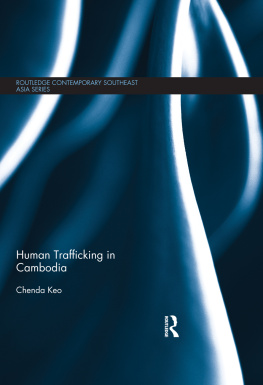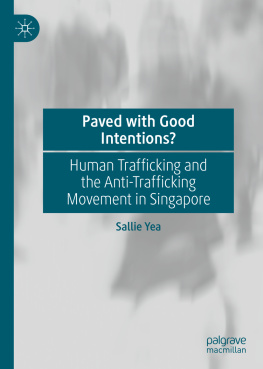Introduction and Overview
This textbook is aimed to engage students about the complex and troubling practices of human trafficking in persons within the context of human rights and social justice perspectives. While human trafficking as a human atrocity is not a new phenomenon, recently discovered awareness of this problem has made it a focus of public concern. In the past five years, academic attention on the topic has increased apace. In the year before writing this textbook, we found that 98 out of 108 (91%) Research 1 universities in the United States held a seminar, workshop, or other educational forum addressing human trafficking; 48 of 108 (44%) have offered a course focused solely on trafficking in persons. Human trafficking was most frequently taught as a 14-week upper-division undergraduate and/or graduate-level course. With no academic prerequisites other than academic standing, the course was typically 50 to 100 students, taught once or twice per year. This has undoubtedly increased since we originally evaluated the learning environment.
Also, as of this writing, there are slightly more than a dozen books on human trafficking or modern slavery that might serve as a core or supplemental text at the university level. In addition, there are dozens of exposs, journalist reportingstyle narratives, or books available as support materials. We have cited many of these scholars and writers in this textbook and have used many of these resources in our own classrooms and seminars when teaching on the topic. This text is set apart from these existing resources in several ways. First, for nearly a decade we have been heavily involved in the development of empirical knowledge about human trafficking through original data collection and peer-reviewed publications. Our research has included interviews and surveys with victims and survivors, law enforcement, prosecutors, social workers, victim advocates, and policy makers, among others. We have also presented extensively to professionals, taught college students, served as expert witnesses, and supervised research practica on this topic. All chapters include our learning thus far on human trafficking, although we continue to develop our knowledge on this complex and evolving topic.
Building on an understanding of the meaning and scope of human trafficking, the text addresses specific vulnerabilities of human trafficking victims, medical-psychosocial needs of victims, and issues related to direct service delivery. Specific attention focuses on the identification of human trafficking crimes, traffickers, and the impact of this crime on the global economy. Legal and criminal justice issues, types of human trafficking, and typologies of traffickers are provided. Finally, the text provides information on national and international antitrafficking policies and prevention and intervention strategies, including offering clarity on the laws in place to protect victims and promising practices to combat human trafficking. Throughout the text, detailed case examples of human trafficking will illuminate real situations, responses of law enforcement, service providers, organizational challenges, and the cost of trafficking to human well-being. In addition, the text offers discussion questions and interactive classroom exercises and projects designed to deepen student understanding and application. Factual cases worked by social workers and law enforcement as well as prosecuted cases are the focus of case studies.
The text provides students with an ecological and intersectionality perspective that ties poverty, gender, prostitution, undocumented workers, and unpaid immigrant labor to the issue of human trafficking. The fundamental framework is built on a contemporary human rights perspective.
Audience and Our Perspective as Authors
The topic of human trafficking is related to a variety of fields of study. For this reason, this textbook is structured to optimize its use for instructors and students in a variety of fields such as social work, education, anthropology, criminology, womens and gender studies, sociology, social psychology, nursing, communication and rhetoric, law, criminal justice, foreign policy, economics, public affairs, peace and conflict studies, cultural studies, and foreign policy. It is intended to serve as a core text for a human trafficking course for either undergraduate or graduate students but could be used as supplemental reading in any human rights, violence against women, or law school clinic course.
We are challenged in two primary ways to bring a variety of voices and perspectives to this text. While we have extensive teaching and research experience in multidisciplinary human trafficking and other teams and much of this has been in other countries, we are U.S.-trained social scientists, academics, and licensed social workers. We have included materials throughout the text about the important international antitrafficking efforts in the world, perspectives that are unique to law enforcement, prosecutors, and social services providers, for example, while acknowledging that our perspectives are as American social workers and applying the relevant theories and research of our discipline to our allied professions.













